Minimalism Vs. Maximalism: Which is Best for You?
7 min read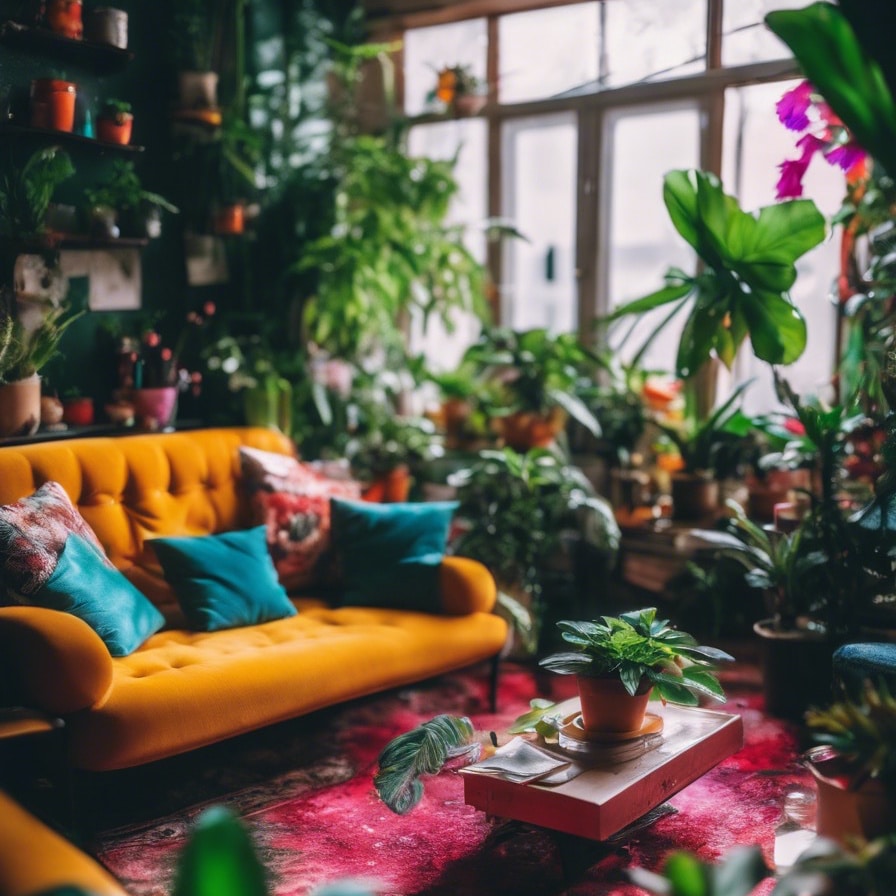
While minimalism is a popular topic on social media and Youtube as a smart way to reduce stress in your lifestyle, there is a flip side to the streamlined approach to living. Maximalism is the exact opposite but can be considered another way to live a joy-filled life.
Minimalism is all about calm, serenity, and intentional simplicity. It is a method of helping people distill their existence down to its most essential elements. In opposition, maximalism celebrates the vibrancy of an abundant life, filled with color, variety, and texture. There is joy is celebrating owning things and the comfort of having more than the basics.
This juxtaposition is not just about aesthetic and material choices but also reflects deeper values and attitudes. The two concepts couldn’t be further apart, yet they both can be an expression of the pursuit of happiness and meaning.
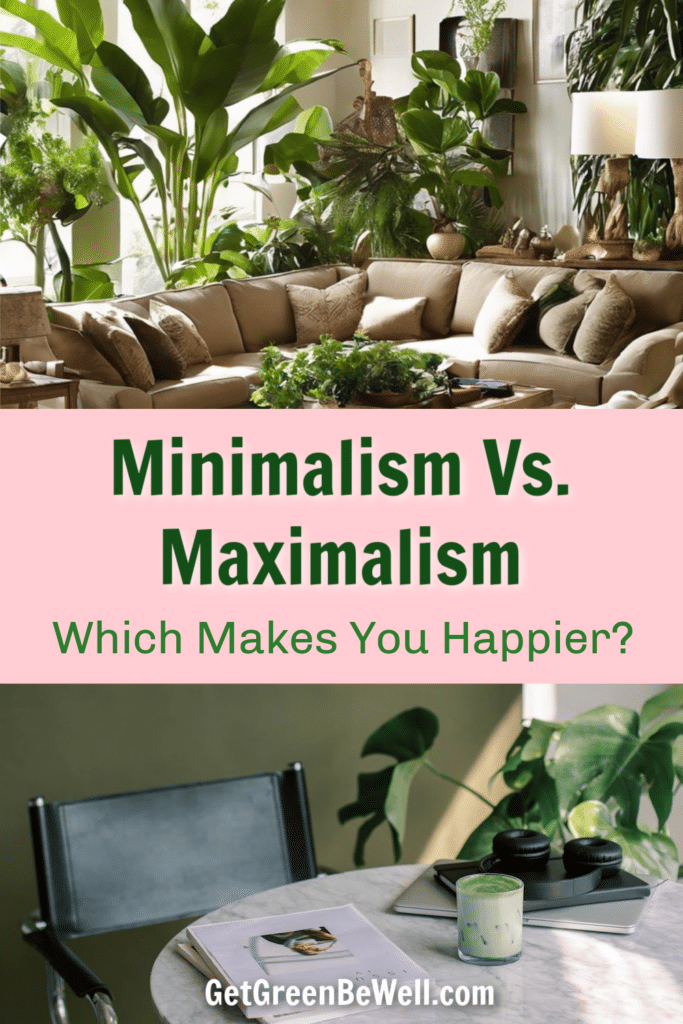
Understanding Minimalism: The Power of Less
Minimalism is not merely about decluttering physical spaces. It is also a lifestyle that champions simplicity and intentional living.
At its core, minimalism encourages you to focus on what truly matters, shedding excess possessions, commitments, and distractions to create room for a more purposeful existence.
Champions of minimalism argue that by owning fewer possessions, we gain the ability to appreciate the things we do have. It is questioning consumerist ideals, encouraging a deliberate and mindful approach to consumption.
This philosophy extends beyond physical belongings to encompass a minimalist mindset in all areas of life, emphasizing the importance of quality over quantity.
By reducing the noise and clutter in your life, minimalism aims to create a space for clarity, creativity, and meaningful connections.
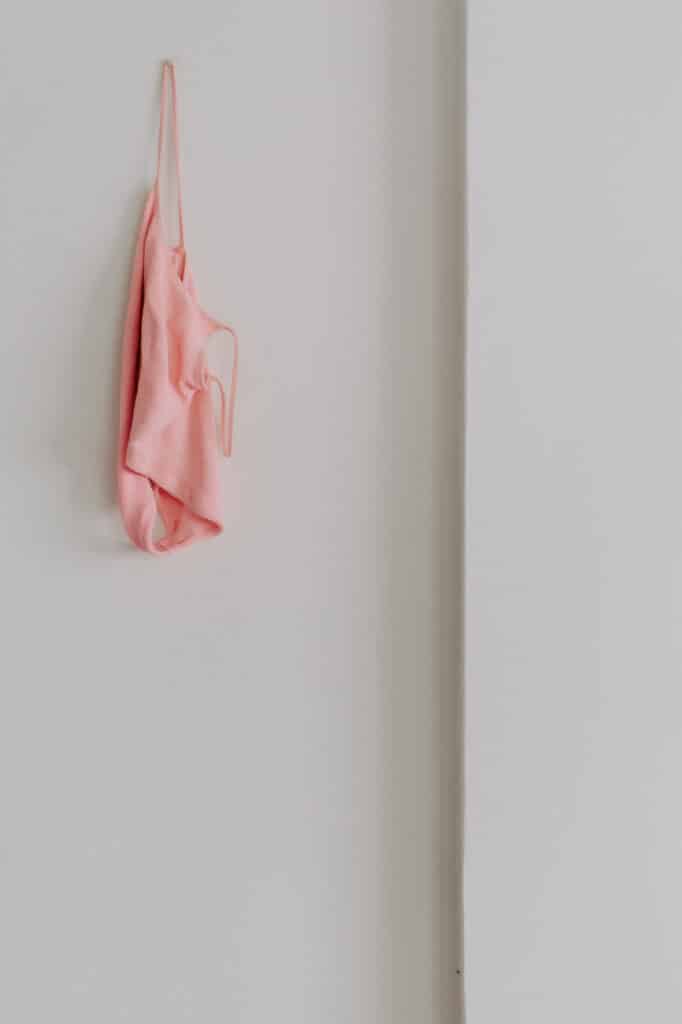
Benefits of Minimalism
- Reduced Stress and Overwhelm: A minimalist lifestyle can alleviate the stress associated with clutter and excess. The simplicity of a minimalist environment promotes a sense of calm and order.
- Increased Focus and Productivity: With fewer distractions, minimalism fosters an environment conducive to deep work and increased productivity. This is particularly beneficial in a world inundated with constant stimuli.
- Financial Freedom: Embracing minimalism often leads to more mindful spending habits. By curbing unnecessary purchases, individuals may find themselves with more financial freedom and the ability to invest in experiences rather than possessions.
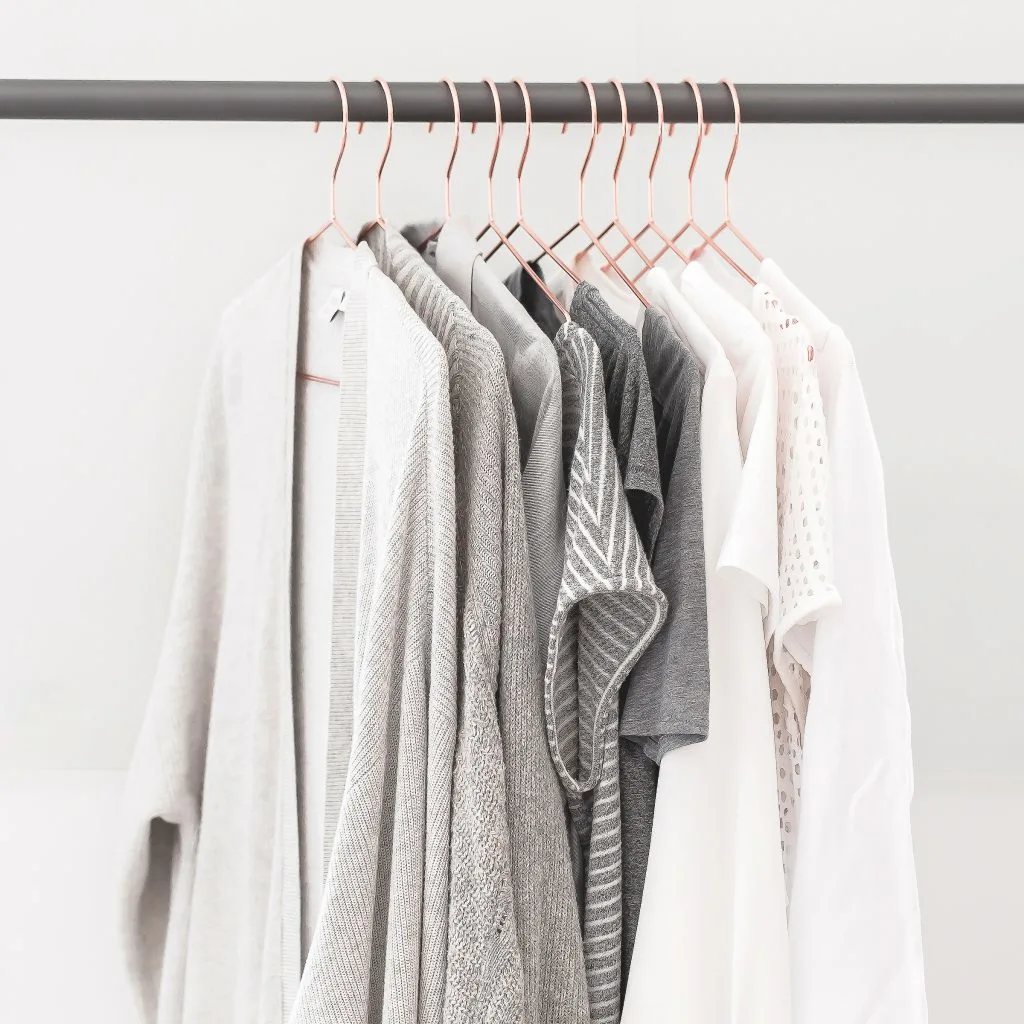
Challenges of Minimalism
- Getting Rid of Sentimental Items: Things have memories. They can remind us of the best times of our lives and often provide comfort. Most minimalists will tell you to get rid of sentimental items that cannot be used in daily life. This can be emotionally taxing and can cause regret later on. It’s one of the reasons why I hate minimalism.
- Feeling Out of Place in Social Situations: Your minimalist lifestyle can conflict with societal expectations, causing friction and broken relationships. When you are not happy on Christmas morning opening presents because you don’t want lots of stuff, or you don’t join friends for a fun da of shopping because of your consumerist values, you may find that your existing relationships are strained.
- Stress of Expectations: You can find plenty of people shouting from the rooftops how minimalism makes them happy, but different people find joy and meaning in diverse ways. If you are not happy living a streamlined life, you may experience more stress thinking something is wrong with you.
Related Post: Best Gifts for a Minimalist
Maximalism: Celebrating Abundance and Individuality
In stark contrast to minimalism, maximalism is an embrace of abundance, an unapologetic celebration of individuality, and a rejection of limitations. Maximalists revel in the diversity of life, surrounding themselves with a profusion of colors, textures, and experiences.
Maximalism is the beauty of excess. It is an aesthetic and lifestyle that thrives on the idea that more is more. From vibrant patterns and eclectic décor to a multitude of interests and activities, maximalists embrace the full spectrum of possibilities life has to offer.
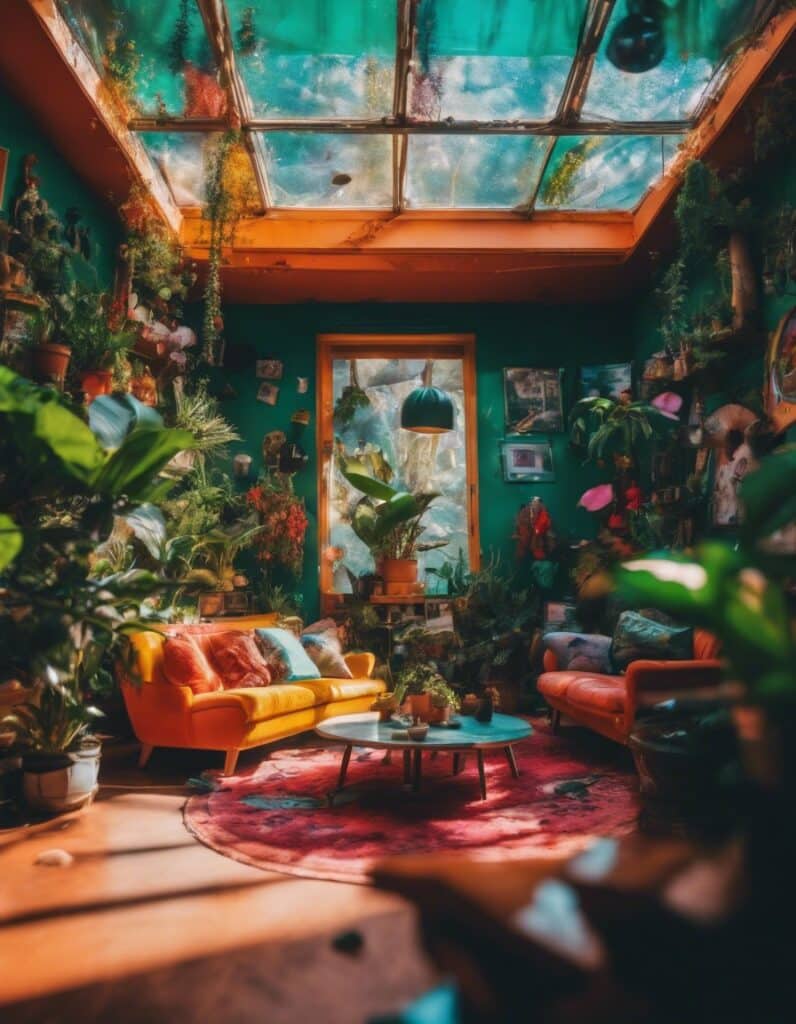
Benefits of Maximalism
- Expression of Individuality: Maximalism allows individuals to express their unique personalities and interests. Each item, color, or pattern in a maximalist space tells a story and contributes to a rich tapestry of personal history. You are not fitting in with societal norms or standards and you choose to live your life in your own way, not according to someone else’s playbook.
- Comfort and Coziness: Maximalist spaces often exude a sense of warmth and comfort. The abundance of textures and objects can create an inviting and cocoon-like atmosphere that many find comforting. Think cozy beds with lots of throw pillows and blankets.
- Preparing for Life’s Complexity: Maximalism acknowledges the complexity and unpredictability of life. By embracing abundance, maximalists argue that they are better equipped to navigate the challenges and uncertainties that arise. For example, storing extra food supplies in your pantry in case of a power outage or severe weather. Or keeping clothing you love but have outgrown because of weight gain in case you lose the weight.
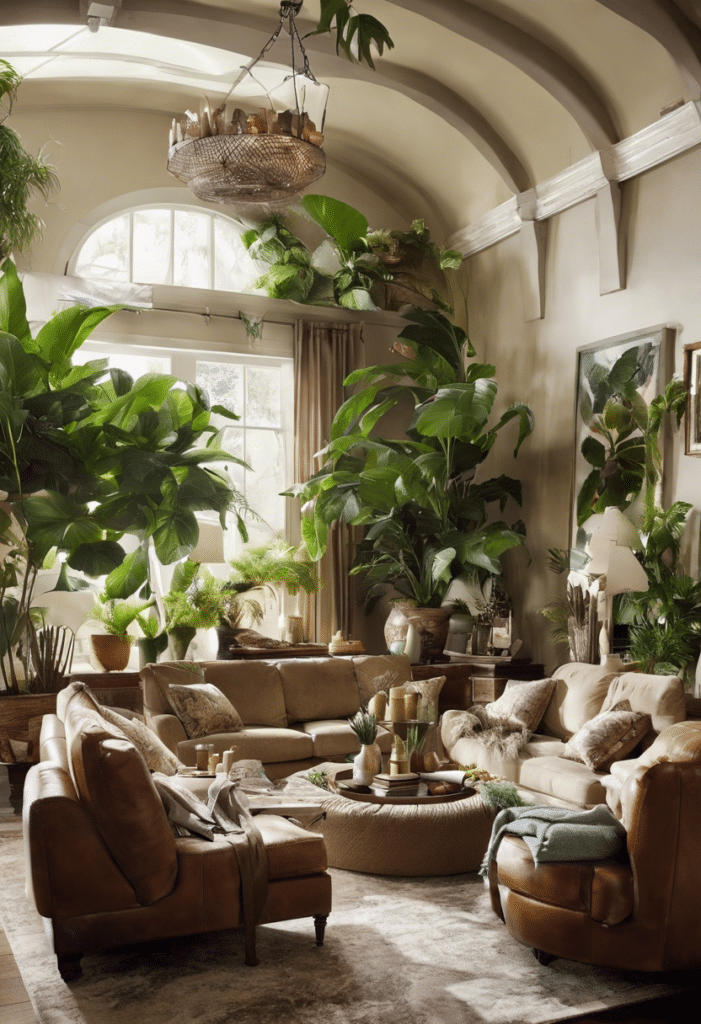
Challenges of Maximalism
- Sensory Overload: Visual clutter and overwhelming stimuli can be stress-inducing, even when it is things that you love.
- Financial Strain: Constantly buying stuff can be bad for your budget. If you have disposable income for buying the items, that’s one thing. Running up a debt on your credit cards for the sake of buying stuff is different.
- Can’t Find What You Need: Lots of stuff means you can’t always easily find what you need. You may end up buying even more because it would take too long to go through your possessions to find the gadget or appliance you know you have, but don’t know where you put it.
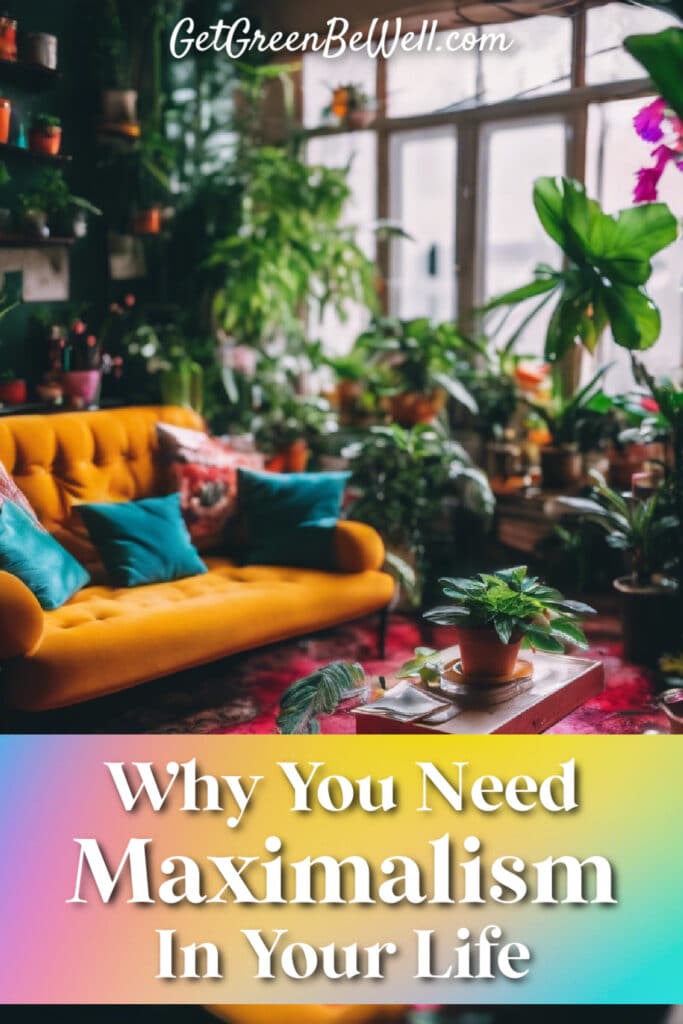
Essentialism: A Common Sense Approach
Here’s a news flash: You don’t have to choose to be a minimalist or maximalist.
Wait, what?!?
Yep, you don’t have to label yourself on Team Minimalism or Team Maximalism. Social media and influencers trying to sell a curated lifestyle will have you believe you need to be one or the other. And if you’re not, then you are simply not living your life right.
Have you encountered those messed-up mentalities of narrow ways of thinking, too? This myopic approach of “there’s only one way to live your life and it’s the way that I live mine” can be extremely harmful to your mental health and can cost you a lot of money in losing possessions you later need to replace or by owning more than you need.
And, hey, if you are about to write me a nasty comment about how minimalism is the only key to a happy life and that my views are wrong, then you need to check your thinking. Who are you to say how I should live MY life?
Finding a balance between the two can offer a harmonious and personalized approach to life. You ARE smart if you have read this far. You do NOT need a cookie-cutter method of living your life.
Do you hear me? Stop living your life according to someone else’s ideals and start living your life to bring YOU joy, whatever that looks like or means.
The middle ground, which to me is simply common sense but is often referred to as “essentialism” in today’s age, encourages you to identify and focus on what truly adds value to YOUR life.
Essentialism: Somewhere In the Middle and Loving It
Essentialism involves intentional decision-making, choosing only the essentials and eliminating the non-essential. This approach recognizes that both minimalism and maximalism have valuable insights to offer and that a well-curated life incorporates elements of both.
Personally, I find myself embracing and loving essentialism, with a leaning towards maximalism in some areas of my life, but not all aspects.
If you go into my kitchen, you will find a somewhat-streamlined spice rack, mostly organized drawers with just what we need and use, and appliances put neatly in their place. My closet though, is packed with clothes that I love but never wear because I’m hopefully waiting I will fit into them again. These are quality clothes that are made well and are investments. To replace them a year or two later would cost me more money than I have, and I would need to spend a LOT of time trying to source something comparable.
Throughout the concept of essentialism, you can create a home that reflects your unique identity. Boldly choose and prioritize what brings you joy, purpose, and fulfillment regardless of societal expectations. Yet also be bold enough to eliminate unnecessary distractions and burdens, regardless of what society tells you to do.
Conclusion: Crafting a Life of Meaning
In the grand tapestry of life, whether you choose the simplicity of minimalism, the abundance of maximalism or a blend of both through essentialism, the biggest benefit will be in conscious living.
The art of living is a deeply personal journey, and the choices we make in shaping our environments and lifestyles contribute to the masterpiece that is our life.
In the end, it is not about adhering strictly to the principles of minimalism or maximalism. It is about crafting a life that aligns with our values, passions, and aspirations. Whether we find solace in the serene simplicity of minimalism or joy in the vibrant chaos of maximalism, the true essence of our journey lies in the intentionality and authenticity we bring to our lives.
Want more ideas for simple and intentional living? See these guides next:








